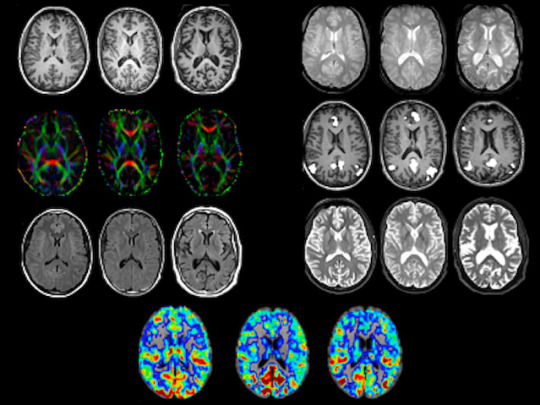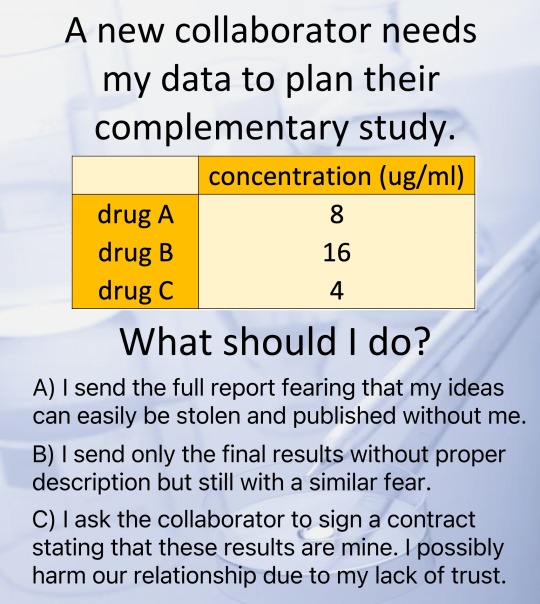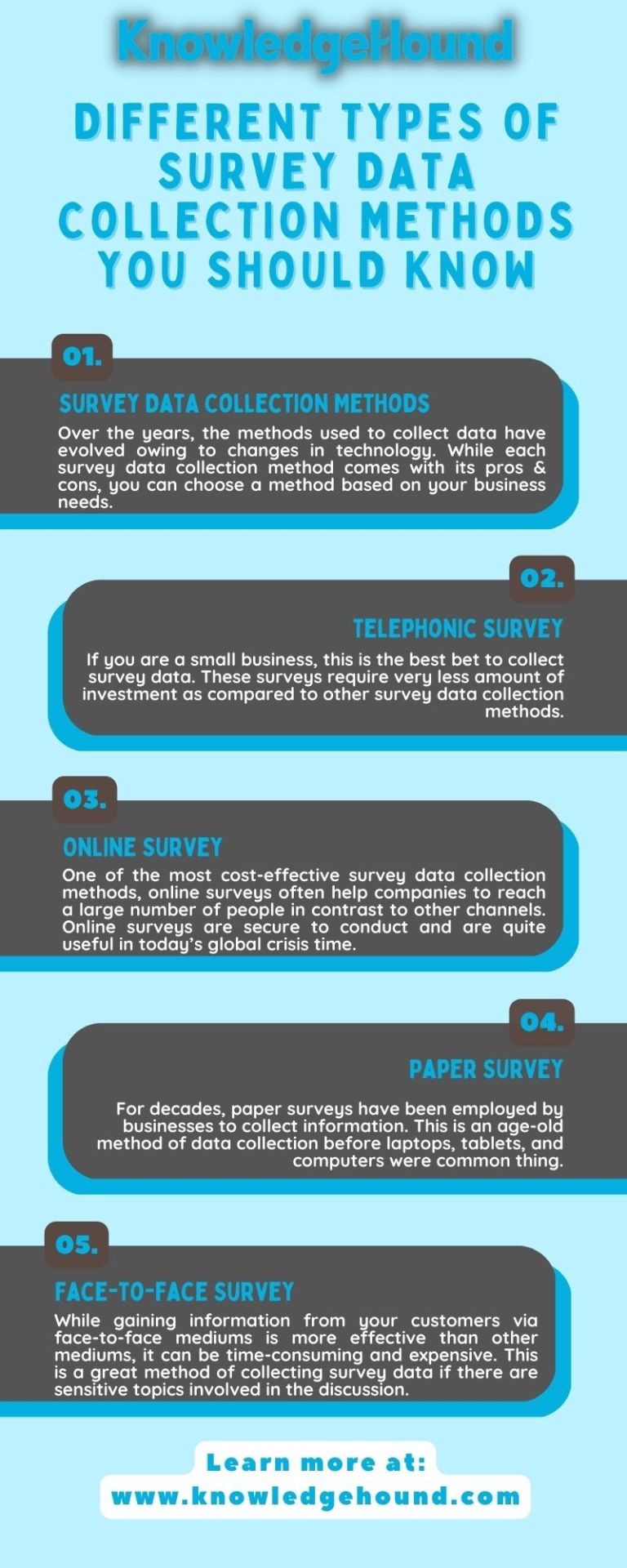#data sharing
Text
to all artists and everyone following me (just in case) please turn this ON !!!

where to find the setting: account settings > Visibility
for desktop/browser: account > select blog > Blog settings (in lower right , above mass post editor) — it should be there when you scroll down !
#important#important psa#third party sharing#AI model#fuck ai#data sharing#artists on tumblr#idfk what i should tag here tbh
13 notes
·
View notes
Text

Sharing Brains
Brain imaging resource of data collected from individuals genetically inheriting predisposition to Alzheimer's disease provides insight into the onset in the much larger population who develop the disease sporadically and into brain ageing generally
Read the published research paper here
Image from work by Nicole S. McKay and colleagues
The Dominantly Inherited Alzheimer Network, Washington University in St. Louis, St. Louis, MO, USA
Image originally published with a Creative Commons Attribution 4.0 International (CC BY 4.0)
Published in Nature Neuroscience, July 2023
You can also follow BPoD on Instagram, Twitter and Facebook
#science#biomedicine#neuroscience#brain#alzheimer's#genetics#ageing#mri#brain scans#open resource#data sharing
11 notes
·
View notes
Text

What would you do?
#science#women in science#research#postdoc#stem#microbiology#medical research#academia#collaborations#working together#experiments#results#data sharing#original content
4 notes
·
View notes
Photo

In this digital world, companies rely on survey data to gather information about their targeted audience and their preferences. Businesses employ different methods to collect the survey data and analyze it. There are various mediums used to collect opinions and feedback from customers. While conducting a survey, researchers often choose multiple sources to collect data. KnowledgeHound shares the different methods used to collect the data.,,Learn more
#survey data#survey tools#knowledgehound#research analysis#survey analysis#database management#data management#data insights#longitudinal data#data exploration#database tool#analytics solution#consumer data#data sharing
1 note
·
View note
Text
From instructions on how to opt out, look at the official staff post on the topic. It also gives more information on Tumblr's new policies. If you are opting out, remember to opt out each separate blog individually.
Please reblog this post, so it will get more votes!
#third party sharing#third-party sharing#scrapping#ai scrapping#Polls#tumblr#tumblr staff#poll#please reblog#art#everything else#features#opt out#policies#data privacy#privacy#please boost#staff
47K notes
·
View notes
Text
youtube shouldn't know where i live.
0 notes
Text
U.S. Treasury warns financial sector, AI threats “outpacing” security - CyberTalk
New Post has been published on https://thedigitalinsider.com/u-s-treasury-warns-financial-sector-ai-threats-outpacing-security-cybertalk/
U.S. Treasury warns financial sector, AI threats “outpacing” security - CyberTalk


EXECUTIVE SUMMARY:
According to a new U.S. Treasury Department report, the financial services industry is extremely vulnerable to cyber threats that weaponize AI-based tools. The report provides warning to the industry at-large, while also sharing best practices and advocating for AI-based threat prevention.
The “…report builds on our successful public-private partnership for secure cloud adoption and lays out a clear vision for how financial institutions can safely map out their business lines and disrupt rapidly evolving, AI-driven fraud,” stated Under Secretary for Domestic Finance, Nellie Liang.
AI-powered attacks
According to high-level stakeholders who hail from financial technology companies, generative AI capabilities may give the “upper hand” to cyber criminals.
Experts anticipate that AI will supercharge malware potency, social engineering tactics, vulnerability discovery (on the part of hackers) and disinformation campaigns – including deepfake videos that show impersonation of executives.
Financial institutions have long utilized AI for cyber security, anti-fraud and other operational purposes. However, many have stated that their current risk frameworks remain inadequate when it comes to preventing novel artificial intelligence-based attack vectors.
As AI models become more resource-intensive, over-reliance on third-party cloud providers also presents new cyber security risks.
Short-term recommendations
The Treasury report details several immediate measures that financial services companies can take to mitigate risks:
Leverage existing regulations. Although AI-specific rules are still emerging, many current cyber security, privacy and risk management regulations can be applied to AI system governance.
Improve anti-fraud data sharing. At present, large banks have a major advantage in building AI fraud detection models, as they have large data reserves. More public-private data pooling is needed.
Develop AI data supply chain mapping. Like nutrition labels for food, “AI nutrition labels” should be mandated to clarify the origins and parameters of training data used to build AI models.
Cyber workforce transformation. Static training programs must be overhauled in order to develop AI-fluent cyber security professionals; talent that can effectively operationalize AI-based tools while upholding ethics, security and privacy standards.
Push for increased government coordination. An inconsistent patchwork of state/federal AI rules presents a tangle of different challenges. Aligned regulations and public-private partnerships are needed in order to effectively combat threats.
Long-term solutions
In order to address the AI-based cyber security challenges outlined by the U.S. Department of the Treasury, financial institutions are also encouraged to explore Check Point’s industry-leading AI cyber security offerings.
Check Point’s unified cloud security platform secures financial AI workloads and data across public clouds, private clouds and on-premises, using comprehensive AI-powered security services.
Given how AI-based cyber threats are intensifying, banks and fintech groups need to urgently prioritize AI risk management programs, upgrading defenses before disruptive attacks manifest.
Early mover advantage
When it comes to getting ahead of the AI security curve, there is such thing as an early-mover advantage. By partnering with Check Point, financial institutions can acquire the strategic vision and execution velocity required to outpace modern threats. To learn more about AI-powered, cloud-delivered cyber security solutions, please click here.
In addition, empower your organization through more great thought leadership. Discover new artificial intelligence focused thought leadership insights from CyberTalk.org, here. Lastly, to receive cutting-edge AI cyber insights, groundbreaking research and emerging threat analyses each week, subscribe to the CyberTalk.org newsletter.
#ai#AI Cyber Security#ai security#AI-powered#analyses#artificial#Artificial Intelligence#Building#Business#Check Point#CISO#Cloud#cloud providers#Cloud Security#cloud-delivered#clouds#Companies#comprehensive#cutting#cyber#cyber attack#cyber criminals#cyber security#cyber security professionals#Cyber Threats#cybersecurity#data#data sharing#deepfake#defenses
1 note
·
View note
Text
The Rise of AI in Crypto: A Look at Top Projects by Ecosystem
New Post has been published on https://www.ultragamerz.com/the-rise-of-ai-in-crypto-a-look-at-top-projects-by-ecosystem/
The Rise of AI in Crypto: A Look at Top Projects by Ecosystem
The Rise of AI in Crypto: A Look at Hyped Projects by Ecosystem
The intersection of Artificial Intelligence (AI) and cryptocurrency is a bustling landscape teeming with innovative ideas. AI projects are utilizing blockchain technology to create decentralized marketplaces for data, training models, and AI computation. This article explores some of the most hyped projects within the AI in crypto space, categorized by their primary ecosystem, and explores potential future players in the L1 blockchain space.
Ethereum-Based AI Projects:
Fetch.ai (FET): Focuses on building a decentralized machine learning network powered by autonomous economic agents.
Ocean Protocol (OCEAN): Creates a decentralized marketplace for data sharing.
SingularityNET (AGI): Aims to be a global marketplace for AI services and tools.
Numerai (NMR): Specializes in building a decentralized hedge fund powered by artificial intelligence.
iExec RLC (RLC): Provides a decentralized cloud computing platform for running AI applications.
Cortex (CORT): Focuses on building an open-source, interoperable AI ecosystem.
Enigma (ENG): Offers a privacy-preserving computation platform for AI.
Imgnai (XIMG): Focuses on AI-powered image and video recognition applications.
SBR (SBR): Aims to build a decentralized marketplace for AI-powered medical data.
ALI (ALI): Creates a decentralized platform for AI-driven asset management.
Jub (JUB): Offers a secure enclave solution for AI training on confidential data.
Naka (NAKA): Provides a decentralized platform for AI-powered prediction markets.
Cosmos-Based AI Project:
Injective Protocol (INJ): Creates a decentralized derivatives exchange powered by AI and machine learning.
Own Blockchain Projects:
DeepBrain Chain (DBC): Develops a blockchain infrastructure specifically designed for AI applications.
Deepcoin (DEP): Focuses on AI-powered financial services and risk management.
Solana-Based AI Projects:
Serum (SRM): Provides a decentralized exchange with on-chain order book management, leveraging AI for efficient market making.
Pyth Network (PYTH): Offers a decentralized oracle network specifically designed for providing reliable data feeds for AI applications.
Other Blockchain Projects:
Arweave (AR): (Own Blockchain) Creates a permanent decentralized storage solution for AI data and models.
Audius (AUDIO): (Ethereum) Builds a decentralized music streaming platform powered by AI for music discovery and curation.
Potential AI Players on Other L1 Blockchains:
While the space is still evolving, some L1 blockchains are exploring AI integration through ongoing development or community projects. Here are a few potential future players to watch:
Cardano (ADA): The Cardano community recently voted to allocate funding for AI projects, and SingularityNET (AGI) has expressed interest in integrating with Cardano. A hypothetical “Cardano AI (CAI)” coin is also a possibility in the future.
Important Note:
While the coins listed above represent some of the hyped AI projects in crypto, it’s crucial to conduct thorough research before investing in any cryptocurrency. The AI in crypto space is still evolving, and many projects remain in their early stages of development. Consider the project’s team, technology roadmap, and community engagement before making any investment decisions.
The Future of AI in Crypto:
The integration of AI and blockchain holds immense potential for the future of data management, machine learning development, and financial services. As these technologies converge, we can expect to see further innovation and disruption across various industries. However, navigating the hype and identifying truly groundbreaking projects requires careful research and a cautious investment approach.
#AI computation#AI in crypto#AI integration#ALI (ALI)#Artificial intelligence#Arweave (AR)#Audius (AUDIO)#blockchain ecosystem#cardano#Cardano (ADA)#Cartesi (CTSI)#community engagement#Cortex (CORT)#Cosmos#Cryptocurrency#data management#data sharing#decentralized marketplace#DeepBrain Chain (DBC)#Deepcoin (DEP)#Enigma (ENG)#ethereum#Fetch.ai (FET)#financial services#hyped AI coins#iExec RLC (RLC)#Imgnai (XIMG)#Injective Protocol (INJ)#investment#Jub (JUB)
0 notes
Text
2024: New Top Data Regulator; Can IPR Improve Data Sharing?
Central guidance from the recently-established National Data Administration (国家数据局) promises to reduce the current confused situation of “twenty dragons ruling the waters”. Poor IPR protection for data reduces efficiency overall as it can make some companies and local governments hold tightly to data that would otherwise circulate more widely.
In 1997 when I worked in the U.S. Embassy Beijing I…

View On WordPress
#Big Data#China#Chinese#coordination#data#data sharing#government#intellectual property#IPR#National Data Administration#politics#PRC#regulation#中国
0 notes
Text
Sweet Dreams in a Clickbait World
Sweet Dreams
Snooze or Lose
The latest pick-up in the press with a clickable link from Axios is How to get more sleep (Americans need it), which frustratingly fails to include a proper reference to the actual source paper or data. The notation “Data: Apple Heart and Movement Study” suggests the data came from this study group out of the Brigham and Women’s Hospital with a web page here. But…

View On WordPress
#apple watch#Big Data#ChatGPT#Data#data sharing#Digital Health#DigitalHealth#disinfomration#educate#education#expert#experts#generative#Health#health Education#Hygiene#Incremental#Incremental Healthcare#incremental improvement#Incrementalist#knowledge#Medical Education#Pseudoscience#Science#Sleep#Sleep Apnea#snake oil#Social Media#Watch#Weight Management
0 notes
Text
How does one collaborate internationally to promote vaccine research and development?
International collaboration plays a crucial role in advancing vaccine research and development, especially in the face of global health challenges. Cooperation among countries, researchers, and organizations fosters the sharing of knowledge, expertise, and resources, leading to accelerated progress in vaccine discovery, testing, and distribution. This article explores the significance of…

View On WordPress
#capacity building#data sharing#global regulatory harmonization#international collaboration#joint funding#multinational research partnerships#pooling resources#scientific knowledge sharing#standardization#training programs#vaccine research and development
0 notes
Text
PNP and COMELEC formally sign data sharing agreement related to BSKE
With the anticipated Barangay and Sangguniang Kabataan Elections (BSKE) all set for October 30, 2023 (a declared non-working day), the Philippine National Police (PNP) and the Commission on Elections (COMELEC) recently signed a formal agreement on data sharing related to the said elections, according to a news article published by the Philippine News Agency (PNA).
To put things in perspective,…

View On WordPress
#2023 elections#Asia#barangay#Barangay and Sangguniang Kabataan elections (BSKE)#Barangay elections#Blog#blogger#blogging#Carlo Carrasco#COMELEC#Commission on Elections (COMELEC)#community#crime#crime watch#data privacy#data sharing#democracy#election#election campaigning#election campaigns#election integrity#elections#fake news#geopolitics#governance#kabataan#news#NO to Fake News#Philippine National Police (PNP)#Philippine News Agency (PNA)
0 notes
Text
Article 22 of the General Data Protection Regulation (GDPR)- Automated Processing Decision
Article 22 of the General Data Protection Regulation (GDPR) deals with the right of individuals not to be subject to a decision based solely on automated processing, including profiling, which produces legal effects concerning them or similarly significantly affects them.
In other words, the GDPR prohibits organisations from making decisions about individuals’ data that are based solely on…

View On WordPress
#Automated decision-making#Children&039;s data protection#consent#Controller#Criminal offenses under data protection law#Cross-border data transfers#Data breach#Data minimization#Data portability#Data processor#Data protection authority#Data protection impact assessment (DPIA)#Data protection impact assessments (DPIAs)#Data protection officer (DPO)#Data protection principles#Data retention#Data sharing#Data subject#Data subject rights#Enforcement and penalties#Exemptions under the DPA 2018#GDPR: Personal data#Information Commissioner&039;s Office (ICO)#International data transfers#Lawful basis for processing#Personal data#Privacy by design#Privacy notice#Privacy policy#Processor
0 notes
Text
How AI and blockchain work together
AI and blockchain are two emerging technologies that have the potential to work together to create new opportunities and applications. Here are some ways in which AI and blockchain can work together:
Data management: AI requires a large amount of data to train and improve its algorithms. Blockchain provides a secure and decentralized way to store and manage data, ensuring that it is tamper-proof…

View On WordPress
#Adoption#AI#Artificial Intelligence#Blockchain#data management#data sharing#decentralization#smart contracts
1 note
·
View note
Text
Effective Data Insights — A Game Changer for Businesses
Data insights are crucial for businesses to make informed decisions and remain competitive in the ever-evolving market. With the increase in the volume, variety, and velocity of data, it has become necessary for organizations to have the capability to analyze data and derive insights that help them make data-driven decisions. This article will explore the importance of data insights for businesses, steps to achieving effective data insights, best practices, tools, challenges, and future of data insights.
Introduction to Data Insights
According to KnowledgeHound, Data insights refer to the process of analyzing and interpreting data to extract meaningful information that can be used to make informed decisions.
It involves using various tools and techniques to identify patterns, trends, and relationships in data. There are many resources available for beginners who want to learn about data analytics, including online courses and guides.
These resources cover topics such as the role of a data analyst, tools used in data analysis, and the entire data analysis process. With the increasing demand for professionals with skills in data analytics, learning this field can be a great way to kickstart a career.

Importance of Data Insights for Businesses
Data insights are crucial for businesses as they provide valuable information that can be used to make informed decisions. By analyzing customer data from various channels, businesses can gain insights into customer behavior and preferences, which can help them provide a more personalized experience.
Historical data analysis can also help businesses anticipate fluctuations in consumer demand and make better business decisions. Companies that embrace data analytics initiatives can experience significant financial returns. Data analytics helps businesses optimize their performance by identifying areas for improvement and making strategic investments.
Implementing data analytics into the business model means companies can stay competitive in today’s market by making informed decisions based on real-time data.
Steps to Achieving Effective Data Insights
Achieving effective data insights involves several steps.
Firstly, it is important to align the data strategy with the business strategy and identify relevant business drivers that could be positively impacted by data and analytics.
Secondly, organizations need to implement processes such as data cataloging and governance and embrace culture changes to achieve effective analytics programs.
Thirdly, businesses should use deep learning to get value from unstructured data.
Finally, carrying out various analyses on the data is essential to obtain insights. The four types of data analysis include descriptive, diagnostic, predictive, and prescriptive analysis.
By following these steps, businesses can turn their data into actionable insights that can be used to make informed decisions.
Best Practices for Data Insights
To achieve the best results from data insights, businesses should follow some best practices.
It is important to define business objectives and identify the key performance indicators that will be used to measure success.
Building high-performance analytics teams and promoting data literacy within the organization can help ensure that everyone understands how to use data effectively.
Collecting, storing, and organizing data correctly is essential for accurate analysis.
Segmenting the audience can help businesses gain a better understanding of their customers’ behavior and preferences.
Using data storytelling can help promote insights by making complex data more accessible and understandable.
Utilizing new infrastructure technology and more advanced analytics can help businesses stay ahead of the competition.
By following these best practices, businesses can turn their data into actionable insights that drive growth and success.
Tools for Data Insights
There are many tools available for data insights that businesses can use to analyze and interpret their data. Some of the most widely used business analytics tools include Microsoft Power BI, Tableau, Qlik Sense, Excel and KnowledgeHound.
These tools are designed to help businesses visualize and analyze their data to gain insights into customer behavior, market trends, and other key metrics. These tools offer a range of features such as data visualization, predictive modeling, machine learning algorithms, and more.
By using these tools effectively, businesses can turn their data into actionable insights that drive growth and success.
Challenges in Data Insights
There are several challenges that businesses face when it comes to data insights.
Managing vast amounts of data can be a challenge, as it requires the right tools and techniques to analyze and interpret the data effectively.
Seelecting the right analytics tool can be difficult, as there are many options available and each has its own strengths and weaknesses.
Data visualization can be challenging, as it requires businesses to present complex data in a way that is easy to understand.
Dealing with data from multiple sources can be a challenge, as it requires businesses to integrate different types of data into a single system.
Low-quality data can also pose a challenge, as it can lead to inaccurate insights and decisions.
Other challenges include cultural dynamics within the organization, inaccessible data, lack of system integration, excessive costs, complexity and skills gaps.
By addressing these challenges effectively through proper planning and implementation of best practices for data insights, businesses can turn their data into actionable insights that drive growth and success.
Future of Data Insights
The future of data insights is promising, with several trends emerging that are expected to shape the industry in the coming years.
Businesses are expected to emphasize business intelligence, edge data, and cloud-native technologies.
Data democratization, artificial intelligence, and real-time data analytics are expected to become more prevalent.
Adaptive AI systems and metadata-driven data fabric are also expected to gain traction.
Real-time automated decision making and no-code solutions are also predicted to be important trends in the future of data insights.
Data quality and observability will continue to be important factors in ensuring accurate insights from data analysis.
By staying up-to-date with these trends and adopting new technologies and techniques as they emerge, businesses can stay ahead of the competition and turn their data into actionable insights that drive growth and success.
Also Read: Different Types of Survey Data Collection Methods You Should Know
#data insights#data interpretation#data management#survey analysis#research analysis#knowledgehound#big data#survey data#data sharing#data mining#machine learning#database tool#data exploration
0 notes